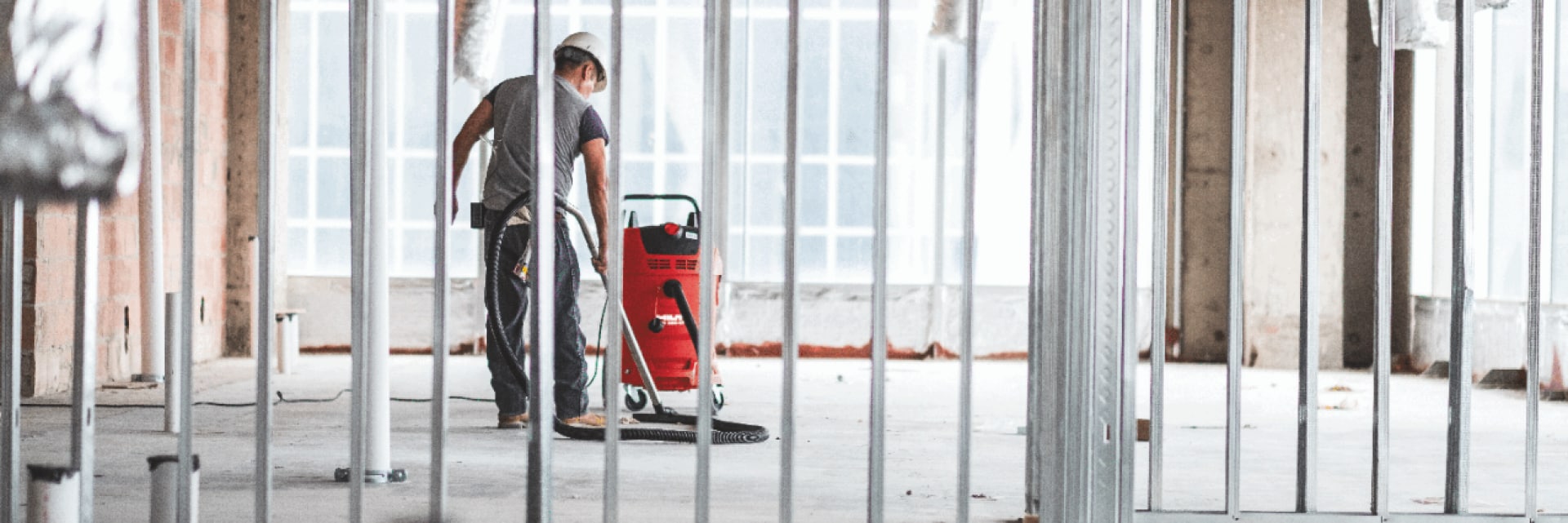- Home
- Homepage
- Dust control
- The importance of respirable crystalline silica (RCS) dust removal
The importance of respirable crystalline silica (RCS) dust removal

Regardless of the project, every construction site needs to be a safe environment for workers. If the right steps aren't taken to minimise hazards, the chances of somebody falling ill or having an accident are exponentially greater, putting not just their health and wellbeing at risk, but the job as a whole. While there are all sorts of different hazards that need to be accounted for, few are as potentially dangerous as respirable crystalline silica dust.
Silica is the second most common mineral in the earth's crust, and can be found in everything from fiber cement boards to stone and clay. When these materials are worked with (for example, via drilling, cutting, grinding or breaking), a form of dust known as respirable crystalline silica (RCS) can be produced and breathed in by a worker, with exposure leading to all sorts of different health issues. Fortunately, it's possible to minimise the risks associated with silica dust by removing it from a building site, and doing so is a key part of meeting occupational health and safety (OHS) standards.
RCS dust removal regulations
Occupational health starts with an understanding of the legal responsibilities associated with workplace hazards. Silica is classified as a hazardous substance under the 2017 Occupational Health and Safety Regulations. Under these standards, employers have a duty to:
- Identify the hazard
- Eliminate or control any associated risk
- Provide employees with relevant information and training
- Undertake atmospheric monitoring
- Maintain records
- Carry out health surveillance in the case of respirable crystalline silica
While these regulations surrounding silica dust removal are designed to tackle a variety of health issues that can arise from improper safety standards, their main objective is to minimise the risk of silicosis. As the most common health issue associated with silica, silicosis is caused by exposure to RCS, and can result in scarring of the lung tissue and shortness of breath – which means that the lungs' ability to function is reduced. The damage caused by silicosis isn't reversible, so it's absolutely critical to manage RCS on a building site through appropriate work practices.
For employers, avoiding silicosis amongst employees is the most important reason to ensure silica dust is effectively managed on-site. At the same time, however, it's important to understand that the associated OHS regulations are your responsibility, and failure to stay in line with them can lead to fines and possibly legal action.
How to monitor respirable crystalline silica levels
While silica can be managed with a variety of dust removal systems for construction sites, it's not always easy to know what levels of RCS are being produced. This is because the dust can often be invisible to the human eye, leading to silica's reputation as a 'silent killer.'
To ensure a thorough understanding of the silica exposure levels being experienced by employees, it's critical for businesses to consistently monitor RCS through testing. This is done by attaching a small dust-sampling device to a worker for the duration of their shift. The collected sample is then tested to determine its respirable dust and silica dust concentration. This information is one of the most effective ways to work out what levels of silica dust are being produced on a site, and whether or not the safety measures in place are adequate.
However, the testing can be expensive, and therefore can't be carried out all the time, which is why individual health monitoring is also important. This is a far simpler process that involves regularly testing employees' lung function and respiratory ability to determine what sort of impact (if any) silica dust may have had on them. In combination with other techniques aimed at reducing RCS exposure - such as silica dust extraction units and other protective equipment - these two forms of monitoring are the best way for employers to create and maintain a safe workplace.
How to reduce silica exposure
In terms of practically reducing the amount of silica dust that workers are exposed to, there are three key factors to consider:
- Dust control: The physical removal of dust - either at the point of creation or from the air - is one of the most effective ways to keep employees safe when working with potentially hazardous materials. Dust collectors (sometimes referred to as 'dust hoods' or 'local exhaust ventilation') and wet working systems such as the coring anchor holes with the Hilti DD 30-W tool, coupled with the DD WMS-100 water recycling unit which uses water to absorb dust at the source are two of the most effective forms of dust control.
- Site management: Understanding the risks associated with RCS, and where on a site it presents a hazard, makes it possible to introduce best practices such as exclusion zones and standardised exposure breaks.
- Respiratory protection: As a last line of defence, every employee working with silica should be using the right equipment, including specialised respirators as well as gloves, goggles and overalls.
Ultimately, silica dust doesn't have to be a huge threat to your workforce. With the right understanding of the associated risk, and a clear plan for monitoring and reducing exposure, employers can ensure their job sites are safe, OHS-compliant places to work.
For more information on the best dust removal systems for your business, get in touch today.
